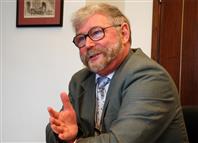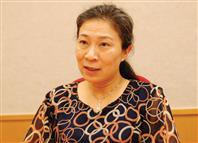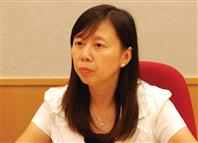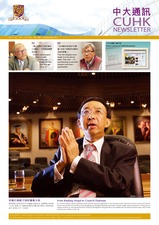What did you read first when you received your writing assignment from your teacher in primary school? The grade or the comments? What did you consider more important when you got your transcript upon graduation from university? The GPA or what you learned all those years? Now, what do you care the most about when your supervisor hands you your performance review report? Whether you got 5.6 in the overall rating or whether you have made progress on your chosen career path?
‘When they get the reports filled in by their reviewers, they’ll go straight to the overall ratings. Everybody does it. It’s a natural human thing,’ said Dr. Colin Storey, University Librarian of the University Library System (ULS). He believes that what really says something about an individual is the parts about his or her accountabilities and competency. ‘They’re not just about a ratings number. It’s the whole report that is really critical, not simply the fact that they get 5.9 or 3.1.’
A System Aimed at Awarding Employees and Facilitating Communication
This year sees the fourth review cycle since the introduction of the Performance Review and Development System (PRDS). The ULS is one of the departments in the University that have conducted productive performance reviews and produced constructive review reports.
Dr. Storey admitted that when the system was introduced, he thought that an annual review was too much, particularly for departments with larger staff numbers. ‘But now seeing it in practice, and seeing those reports going to relevant committees for rewards, I can understand how an annual one is quite useful.’
Ms. Lee Shun-king Corinna, assistant director of personnel at the Personnel Office (PO), added, ‘The system has provided us with a basis for human resource management decisions. For example, in cases of offering somebody promotion or a continuous contract, we can track their performance review reports to see if their performance has been consistently good. This provides us with some justification.’
Dr. Storey agrees with her. He believes that the PRDS allows his line managers to identify and track the progress of excellent staff, and place it on record. ‘This is crucial, since they may be rewarded later, either through the Performance-Linked Reward Scheme, by promotion or continuous appointment.’
He also sees the PRDS exercise as a chance at least once a year for reviewers to sit down to have a formal, personal conversation with their staff. ‘For example, for fellow professionals I look at their career tracks and talk to them about where they think they’re going, in terms of the work within the ULS and also professionally in their general career aims, whether in any sense we can help.’
In addition to awarding high-performing employees, the system is also aimed at promoting communication between managers and their subordinates. By setting out accountabilities, managers can make their subordinates understand their expectations. The system requires these managers to monitor their subordinates’ progress and problems with their work, and to be aware of their career aspirations. The system also encourages reviewees to make their views known.
Ms. Ivy Cheung, personnel manager, said that when the system was first introduced, many reviewers had no idea how to define the accountabilities of their reviewees. ‘For example, how can I weigh a driver’s accountabilities in terms of percentage? Their job duty is nothing but driving. We would guide them to think this way: in addition to driving, does he have to make sure that the car is clean? Does he have to treat passengers politely and provide punctual and safe services? With hints like these, they will get the idea.’
Now, the PO organizes workshops regularly to teach reviewers how to write job descriptions and set out accountabilities. Samples of review reports are available on the website of the PO for reviewers’ reference.
A Mechanical Routine?
Most of the reviewees are assessed by the same reviewers for the same accountabilities year on year. How to avoid being mechanical in the PRDS exercise? Corinna gave a tip, ‘I’d put myself in the shoes of my reviewees and think about their career paths. What is the next step? We can throw out any ideas regarding further development of their careers. It doesn’t necessarily bring about great changes. But only through communication can we achieve improvement.’
Ivy urged reviewers to pay more attention to their reviewees’ day-to-day work. ‘Whenever you find something creditable, note it down. Otherwise, one year later what you only get is the vague impression that they are good. But you can’t remember in what way they are commendable. It is fair to your reviewees only when you keep track of their deeds.’
Now after several years of use, the PRDS exercise is an easier process for the ULS. But its administrators do not see it as just an automatic process conducted mechanically year in year out. They devise an annual flow chart according to deadlines set by the PO. Dr. Storey said, ‘We have the milestone dates that we have to meet to get to the end of the process, which is the actual deadline for the PO to record the ratings online.’ His staff members are sent an e-mail with the flow chart and other related documents and PO circulars attached, reminding them to finish the PRDS exercise carefully and on schedule.
He stressed that an individual’s performance may rise or it may fall (sometimes through circumstances outside of work itself), and the ULS views the performance review positively as developmental (the ‘D’ in PRDS), not negatively as a judgmental tool. ‘I always say to my staff that we’re not looking to censure people for lack of performance,’ said Dr. Storey. ‘We should help individuals that need to perform better. We shouldn’t sit down and spend all the time just blaming the person for lack of performance. We’ll try to find out what’s necessary from the individuals themselves and from their line managers to try to develop them, and to make their performance better. So, this has a continuously evolving nature.’
An Evolving System
The University has undertaken a review of the PRDS at the end of last year. The PO has organized four focus group discussions, met with the unions and engaged a consultant to make recommendations on enhancing the system. After the review, the consultant has made some suggestions to further improve the performance review process. They include appointment of a departmental coordinator in every department/unit to ensure that the PRD procedures and timeline are duly followed. This measure has been introduced in 2010–11. Enhancements that will be implemented in 2011–12 include adjustment of the minimum weighting of each accountability from 10% to 5%. Besides, reviewers’ performance in conducting performance review for their staff will be assessed and recorded under their accountability.
Ivy explained, ‘We hope that reviewers take their job seriously. So, from next year onwards, the supervisors of the reviewers will assess them to see if they conduct the review dutifully or do a sloppy job of it. This is a part of their duty that should not be trivialized.’ 




































































































































































Social Bookmarks